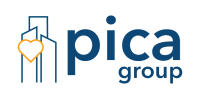2022: deadline for Queensland’s smoke alarms–are you up to speed?
The Queensland Government ushered in updated smoke alarm laws in January 2017 to reduce the incidences of people not waking in time to escape fires. The legislation stipulates that properties leased or sold in Queensland must now be fitted with photoelectric, interconnected smoke alarms on each level, bedroom, and hallway that connects bedrooms by 1 January 2022 (with homeowners having until 1 January 2027).
From 2018 to 2019, Queensland’s Fire and Emergency Services attended more than 2,600 structural fires. Of that number, 1,853 fires occurred in residential buildings, adding to Australia’s annual building fire fatality rate of more than 50 Australians each year.
Many property owners hold the view that fires are a rare occurrence and are unlikely to happen to them. If a building isn’t maintained properly, it can be a significant safety risk for occupants and fire safety personnel who attend to fight the blaze. More importantly, the risk to occupant safety is increased if they don’t wake in time to escape when a fire takes hold.
Bodies corporate must abide by strict fire safety regulations. They must ensure their building meets the appropriate safety standards for building occupants and that their fire safety installations are effective. Heavy penalties apply for non-compliance.Bodies corporate must abide by strict fire safety regulations. They must ensure their building meets the appropriate safety standards for building occupants and that their fire safety installations are effective. Heavy penalties apply for non-compliance.
Here are 3 important areas that property owners should consider when it comes to updating their smoke alarms:
- Smoke alarm legislation update
- What is a photoelectric smoke alarm?
- Key questions for bodies corporate
Smoke alarm legislation update
The Queensland Government passed new smoke alarm legislation on 1 January 2017, making Queensland properties the safest in Australia in relation to fire safety.
Under this new legislation, property owners are responsible for installing photoelectric smoke alarms across a 10-year rollout period ending on 1 January 2027. The smoke alarms must be installed in all bedrooms, in hallways that connect bedrooms with the rest of the dwelling and on every level of the building.
From 1 January 2022, any property sold or leased within Queensland must be fitted with photoelectric smoke alarms that comply with Australian Standard 3786–2014. Existing private properties have until 1 January 2027 to bring their smoke alarms up to standard.
To comply with legislation, strata property owners must replace smoke alarms manufactured more than 10 years ago. They must also replace any smoke alarms that do not operate when tested or those that are not photoelectric smoke alarms, which comply with Australian Standard 3786–2014.
What is a photoelectric smoke alarm?
A photoelectric smoke alarm, also known as an optical or photo-optical smoke alarm, detects visible particles of fire combustion.
Research indicates these smoke alarms detect a more comprehensive range of fires, such as smouldering fires or dense smoke given off by foam-filled furnishings or overheated coated wiring than older smoke alarms.
And most importantly, they are the most effective at rousing occupants, no matter where they are in the house.
Related question from our StrataFAQ community

A: There are a two factors that come into play when answering your query. They depend on the type of fire alarms currently installed and the contract with the fire company (if one has been engaged).
Key questions for bodies corporate
Here, we address three key fire safety topics for bodies corporate:
- What the fire safety obligations for a body corporate are
- The cost of non-compliance
- How to ensure compliance
- What are the fire safety obligations for a body corporate?
Bodies corporate must ensure the following compliance requirements are met annually:
- All fire safety installations must be tested and maintained
A fire safety installation relates to the safety features of structures (doors, windows and dampers), fire protection systems (sprinklers and stairwell pressurisation systems), firefighting equipment (fire extinguishers, hydrants and reels) and occupant safety equipment (signage, emergency lighting and vehicle access). The Building Fire Safety Regulation 2008 details the penalties for non-compliance.
- Ensure evacuation routes are clear and safe
Clear access to evacuation routes must be well maintained and clearly signed. The Building Fire Safety Regulation 2008 specifies that evacuation routes must be free from obstruction, locks and doors must be in proper working order and that they are not altered in any way (such as alterations to air conditioning systems that change the direction of airflow in evacuation routes). They must also be shown in body corporate fire and evacuation plans and diagrams. Bodies corporate are recommended to check their evacuation routes each year.
- An occupiers statement must be completed
An occupiers statement is a summary of the testing and maintenance performed on the fire installations. Licensed fire maintenance providers prepare an Annual System Condition that contains details of all testing and maintenance work completed on fire safety installations. Details of these reports are entered into the occupiers statement, which must be signed by a representative of the body corporate and sent to the Queensland Fire and Emergency Services (QFRS) each year.
- Fire safety evacuation plans must be reviewed annually
Fire and evacuation plans must be prepared by someone licensed with the Queensland Building and Construction Commission.
- Appointment of an evacuation coordinator
The appointed evacuation coordinator must live in the building and complete quarterly fire and evacuation training.
- An evacuation practice must be performed annually
Evacuation practices must be carried out annually in any building not classified as a Class 1A single-detached home.
- Records and documents must be stored for easy reference
A copy of fire safety evacuation plans must be kept on-site and off-site (usually with the body corporate manager or building manager). All fire safety documentation must be readily available for QFRS inspection and include a fire and evacuation plan, training records, evacuation practice record, maintenance records, occupiers statement and certificate of classification.
- The cost of non-compliance
Modern building materials burn eight times faster than those used to build homes 50 years ago, so it’s vitally important that bodies corporate take fire safety seriously.
Under the Building Fire Safety Regulation 2008, the Queensland Government issues hefty fines to property owners who do not comply with fire safety guidelines. These costs are often not covered by insurance (including office bearers’ liability). And if not budgeted for, may force bodies corporate to charge an additional levy to strata property owners to cover fines.
Additionally, insurers do not look favourably on bodies corporate that have been fined for fire safety non-compliance. This can make it difficult for bodies corporate to negotiate competitive insurance premiums, or worse, have their policies declined at the time of renewal.
- How to ensure compliance
In all instances, bodies corporate should seek expert fire advice to make sure that fire systems are compliant, reliable and safe. Fire systems should always be installed, checked and maintained by properly certified professionals.
If you’d like to find out more on building compliance for your strata property, download our FREE Community Living guide. Or to find out more on managing the health & safety for our property, find out more about our Community Health & Safety services. Our team is ready to assist you 24/7. Click here to find out more.
